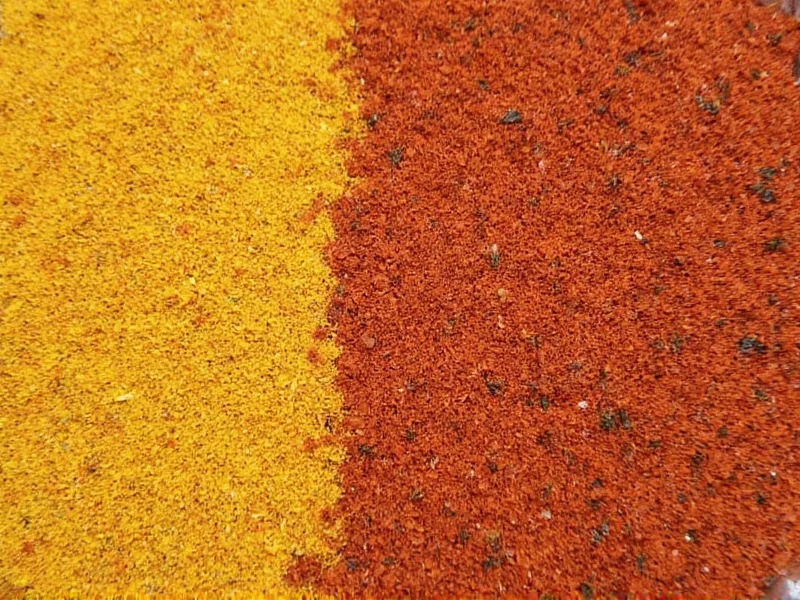The vibrant yellow-orange aji amarillo pepper, native to Peru and a cornerstone of Andean cuisine, offers more than just heat—it delivers a complex flavor profile that has captivated chefs and home cooks alike. Understanding its precise spice level helps culinary enthusiasts incorporate this South American treasure into their dishes with confidence and creativity.
What Exactly Is Aji Amarillo?
Translating to “yellow chili” in Spanish, aji amarillo (Capsicum baccatum) grows primarily in Peru, Ecuador, and Bolivia. Unlike many peppers that turn red when ripe, aji amarillo maintains its distinctive golden-yellow color. This pepper features prominently in traditional dishes like aji de gallina and causa rellena, contributing both heat and fruity undertones that define Peruvian gastronomy.
Decoding the Aji Amarillo Spice Level
When evaluating aji amarillo pepper heat level, the Scoville scale provides the most reliable measurement. Scientific analysis shows these peppers consistently register between 30,000–50,000 Scoville Heat Units (SHU). This places them firmly in the medium-hot category—substantially milder than habaneros (100,000–350,000 SHU) but noticeably hotter than jalapeños (2,500–8,000 SHU).
The aji amarillo scoville units measurement reveals why this pepper works so well in traditional sauces and marinades—it provides noticeable warmth without overwhelming other flavors. Its heat builds gradually rather than hitting with immediate intensity, allowing the distinctive fruity, slightly sweet notes to shine through.
| Pepper Variety | Scoville Heat Units (SHU) | Heat Comparison |
|---|---|---|
| Aji Amarillo | 30,000–50,000 | Base reference |
| Jalapeño | 2,500–8,000 | 4–12x milder |
| Serrano | 10,000–23,000 | 1.5–3x milder |
| Cayenne | 30,000–50,000 | Similar heat range |
| Habanero | 100,000–350,000 | 2–7x hotter |
| Aji Panca | 1,000–1,500 | 20–50x milder |
Factors Influencing Actual Heat Experience
Several variables affect how aji amarillo spice level manifests in your cooking:
- Growing conditions: Soil composition, climate, and elevation impact capsaicin concentration
- Ripeness: Fully mature yellow peppers tend to be hotter than partially ripe green ones
- Preparation method: Removing seeds and membranes reduces heat significantly
- Processing: Frozen or dried aji amarillo may concentrate flavors and heat
When comparing aji amarillo vs habanero heat, the difference becomes particularly noticeable in raw applications. While habaneros deliver an immediate, intense burn that can overwhelm other flavors, aji amarillo provides a more gradual warmth that complements rather than dominates dishes.
Culinary Applications Based on Heat Level
The aji amarillo pepper flavor profile combines moderate heat with distinct tropical fruit notes—often described as reminiscent of apricot, passion fruit, or green banana. This unique combination makes it exceptionally versatile:
- Sauces and marinades: Its medium heat penetrates proteins without overpowering
- Creamy preparations: Dairy products like cheese or cream temper the heat while enhancing fruit notes
- Stews and braises: Heat distributes evenly throughout long cooking processes
- Condiments: Blends beautifully with garlic, cilantro, and traditional Andean spices
Unlike cayenne pepper which primarily contributes heat, aji amarillo offers both warmth and distinctive flavor. When considering is aji amarillo hotter than cayenne, the answer depends on specific specimens—they occupy similar Scoville ranges, but aji amarillo's fruity notes make the heat feel less intense perceptually.
Substitution Guidance for Different Heat Preferences
Understanding how hot is aji amarillo compared to jalapeno helps when substitutions become necessary. Since aji amarillo is approximately 4–12 times hotter than jalapeño, direct substitution requires careful adjustment:
- For authentic flavor (with similar heat): Use 1 part habanero + 2 parts bell pepper to approximate aji amarillo's fruitiness and moderate heat
- For milder version: Aji panca (1,000–1,500 SHU) offers similar flavor with dramatically less heat
- For convenience: Serrano peppers (10,000–23,000 SHU) provide closer heat level but lack the distinctive fruit notes
When working with frozen aji amarillo paste—the most accessible form outside South America—start with 1 teaspoon per serving and adjust to taste. The paste concentrates flavors, so you'll need less than fresh peppers.
Practical Tips for Handling Aji Amarillo
Managing the aji amarillo heat range effectively requires proper technique:
- Always wear gloves when handling fresh peppers to prevent skin irritation
- Remove seeds and white membranes for significantly milder results
- Briefly roasting peppers before use enhances sweetness and reduces perceived heat
- Balance heat with acidic components like lime juice or vinegar
- Pair with dairy or starchy ingredients to moderate the burn
Professional chefs often recommend tasting a tiny piece of cooked pepper rather than raw to accurately gauge aji amarillo pepper heat level in your specific dish, as cooking transforms capsaicin distribution.











 浙公网安备
33010002000092号
浙公网安备
33010002000092号 浙B2-20120091-4
浙B2-20120091-4